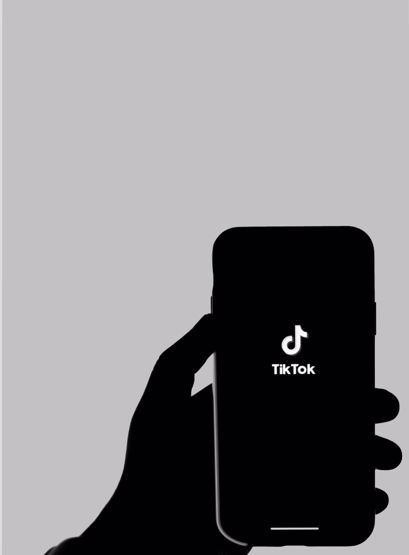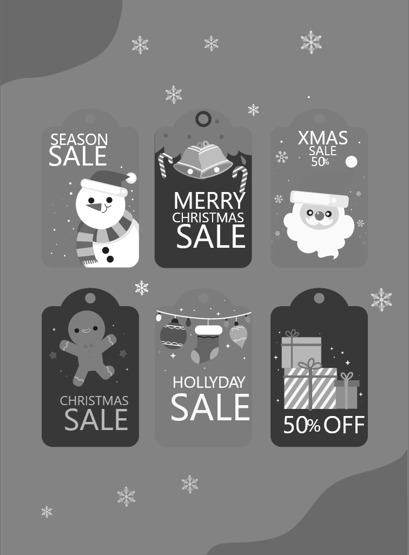Just when we thought that the industry’s giants well adopted the space of social networks, a new application popped up that attracted everyone’s interest very quickly.
The platform first appeared in 2016 on the Chinese market and was known by the name Douyin. In the next year, it launched TikTok on an international scale.
TikTok is a social network where anyone can upload 15-60 second videos with sound and background effects. The platform spread across the world like a virus, and in this article, we’ll discuss exactly how they reached such staggering results.
But before, let’s have a look at some statistics
In 2019 TikTok was the second most downloaded free app.
In the same 2019 year, TikTok had greater activity than Instagram and Twitter.
Today the platform has 800 million active daily users, and the app has been downloaded 2 billion times in total. In comparison, Facebook’s daily active user count is 2.7 billion, while Instagram (which is six years older than TikTok) has a billion.
Both TikTok and Douyin belong to the Chinese AI company ByteDance which was announced as the world’s highest-valued startup by CB Insights. According to the 2020 November analysis, Douyin is valued at $140 Billion. A big part of that success is thanks to TikTok.
The country song “Old Town Road” only gained popularity thanks to a video shared on TikTok. People liked the song voiceover so much, the band sold 10 million copies, and it stayed the number one song on billboards for 19 weeks.
Gaining such activity and popularity in four years is not easy, especially when there is fierce competition in the market. TikTok’s secret is not that straightforward, and it consists of many separate parts.
Acquired user base
When it comes to social networks, the users are the biggest asset of the company. ByteDance solved this issue relatively quickly: In 2016-2017, there was a famous Chinese app called Musical.ly, which was a lip-syncing social platform. In 2018 ByteDance acquired Musical.ly and merged it with TikTok. Users appeared from Musical.ly to TikTok practically overnight.
That’s your egg-chicken solution, done right.
The #ForYou wall
To simplify navigation on the platform, TikTok shows its videos on the whole screen, making it harder than ever to leave the feed. But, scrolling is nothing new for us. A more critical part of the platform’s success is the algorithms it uses to show the content.
TikTok’s main and only wall is called #ForYou, not by accident: It is a video feed, individually tailored for each user. In contrast to Facebook and Instagram, TikTok’s wall consists of other users but friends. The algorithm offers everyone different content based on their interests (sometimes even outside those interests, too, for diversity). This means that the feed of a newly registered user is already full, and the existing ones can always reach new content creators.
The platform kept silent about its video choosing algorithms for a long time. On the 18th of June, 2020, they published the secret recipe for the first time.
The success of the users greatly defines the success of a social platform. Therefore, TikTok’s algorithm is oriented to promoting exciting content, even when created by new users. As we read in their article, when a new video is uploaded on the platform, the AI algorithms show it to a small group of users with related interests. If the video grabs their attention and causes interaction, then it is shown to more users, and so on. The main criterium for choosing test groups is interests. Then come such criteria as follower count, location, and the device people are using.
Such diversity of criteria at play means that the video’s quality is much more important than the follower count, which means excellent videos, always.
The desire to imitate others
Humans are social beings. We observe others and repeat what we like. An experiment done for studying unconscious behaviors found that when two people imitate one another while talking, they’re more likely to remember and be attracted to the other person. Another study found that all primates have so-called ‘mirror neurons’ in their brains responsible for imitating others’ actions.
TikTok plays quite well on this phenomenon: One person uploads a cool video with cool dance moves, and others repeat their movements. Not only does this create a bunch of content, but it also makes users feel more connected, becoming even more addicted in the end.
Generation Z
Also noteworthy is the fact that the most popular and active users on TikTok belong to Gen Z. In other words, people born between 1996-2010. The yearning for new technology is greater in this generation, and TikTok turned out to be a great platform to satisfy that need. Remember Musical.ly that ByteDance acquired and turned into TikTok? The majority of its users were Gen Z. As for TikTok, 60% of its users are aged 14-25. The most popular user, with 100 million followers, is 16-year-old Charli D’Amelio.
As John Lincoln, the CEO of Ignite Visibility, notes:
“What further propelled the growth of TikTok was the need for teenagers to get off Facebook, Instagram, and Snapchat and have a place of their own where their parents couldn’t see what they were up to.”
The platform avoided criticism from parents even when it was still Musical.ly. The app’s description denoted it as a platform for creativity and not as a social network. Therefore it went right under the parents’ radars, which caused concerns only when it was already widespread. TikTok acted wisely and introduced “safety content” features early on, which we will discuss below.
You think the platform is too addictive? Well, TikTok thinks so too!
After reaching immense success, TikTok started taking care of (or, rather, preserving) its users.
Imagine a company whose goal is to sell as many products as possible. Now imagine that that company is selling so much, they start making anti-advertisements. That’s what’s going on right now in TikTok.
There have been many complaints about the app in the current years. Many accuse the Chinese tech giant of misuse of private data and socio-political discrimination, and poor control of age-sensitive content (On the side, Facebook and Instagram aren’t unfamiliar with such accusations either). TikTok responded to criticism in very creative ways.
Digital wellbeing
In 2019 TikTok launched a feature called ‘digital wellbeing,’ which enabled users to limit the time they spend on the app (you can choose either 40, 60, 90, or 120 minutes). After the selected time passes, the app is blocked until the next day. Obviously, you can open it by inserting a password, but it’s still a good reminder that you’re spending too much time on the app. Our advice would be, let your friend set the password for you.




The secret tricks of a rising social media star
10 November 2020Just when we thought that the industry’s giants well adopted the space of social networks, a new application popped up that attracted everyone’s interest very quickly.
The platform first appeared in 2016 on the Chinese market and was known by the name Douyin. In the next year, it launched TikTok on an international scale.
TikTok is a social network where anyone can upload 15-60 second videos with sound and background effects. The platform spread across the world like a virus, and in this article, we’ll discuss exactly how they reached such staggering results.
But before, let’s have a look at some statistics
In 2019 TikTok was the second most downloaded free app.
In the same 2019 year, TikTok had greater activity than Instagram and Twitter.
Today the platform has 800 million active daily users, and the app has been downloaded 2 billion times in total. In comparison, Facebook’s daily active user count is 2.7 billion, while Instagram (which is six years older than TikTok) has a billion.
Both TikTok and Douyin belong to the Chinese AI company ByteDance which was announced as the world’s highest-valued startup by CB Insights. According to the 2020 November analysis, Douyin is valued at $140 Billion. A big part of that success is thanks to TikTok.
The country song “Old Town Road” only gained popularity thanks to a video shared on TikTok. People liked the song voiceover so much, the band sold 10 million copies, and it stayed the number one song on billboards for 19 weeks.
Gaining such activity and popularity in four years is not easy, especially when there is fierce competition in the market. TikTok’s secret is not that straightforward, and it consists of many separate parts.
Acquired user base
When it comes to social networks, the users are the biggest asset of the company. ByteDance solved this issue relatively quickly: In 2016-2017, there was a famous Chinese app called Musical.ly, which was a lip-syncing social platform. In 2018 ByteDance acquired Musical.ly and merged it with TikTok. Users appeared from Musical.ly to TikTok practically overnight.
That’s your egg-chicken solution, done right.
The #ForYou wall
To simplify navigation on the platform, TikTok shows its videos on the whole screen, making it harder than ever to leave the feed. But, scrolling is nothing new for us. A more critical part of the platform’s success is the algorithms it uses to show the content.
TikTok’s main and only wall is called #ForYou, not by accident: It is a video feed, individually tailored for each user. In contrast to Facebook and Instagram, TikTok’s wall consists of other users but friends. The algorithm offers everyone different content based on their interests (sometimes even outside those interests, too, for diversity). This means that the feed of a newly registered user is already full, and the existing ones can always reach new content creators.
The platform kept silent about its video choosing algorithms for a long time. On the 18th of June, 2020, they published the secret recipe for the first time.
The success of the users greatly defines the success of a social platform. Therefore, TikTok’s algorithm is oriented to promoting exciting content, even when created by new users. As we read in their article, when a new video is uploaded on the platform, the AI algorithms show it to a small group of users with related interests. If the video grabs their attention and causes interaction, then it is shown to more users, and so on. The main criterium for choosing test groups is interests. Then come such criteria as follower count, location, and the device people are using.
Such diversity of criteria at play means that the video’s quality is much more important than the follower count, which means excellent videos, always.
The desire to imitate others
Humans are social beings. We observe others and repeat what we like. An experiment done for studying unconscious behaviors found that when two people imitate one another while talking, they’re more likely to remember and be attracted to the other person. Another study found that all primates have so-called ‘mirror neurons’ in their brains responsible for imitating others’ actions.
TikTok plays quite well on this phenomenon: One person uploads a cool video with cool dance moves, and others repeat their movements. Not only does this create a bunch of content, but it also makes users feel more connected, becoming even more addicted in the end.
Generation Z
Also noteworthy is the fact that the most popular and active users on TikTok belong to Gen Z. In other words, people born between 1996-2010. The yearning for new technology is greater in this generation, and TikTok turned out to be a great platform to satisfy that need. Remember Musical.ly that ByteDance acquired and turned into TikTok? The majority of its users were Gen Z. As for TikTok, 60% of its users are aged 14-25. The most popular user, with 100 million followers, is 16-year-old Charli D’Amelio.
As John Lincoln, the CEO of Ignite Visibility, notes:
“What further propelled the growth of TikTok was the need for teenagers to get off Facebook, Instagram, and Snapchat and have a place of their own where their parents couldn’t see what they were up to.”
The platform avoided criticism from parents even when it was still Musical.ly. The app’s description denoted it as a platform for creativity and not as a social network. Therefore it went right under the parents’ radars, which caused concerns only when it was already widespread. TikTok acted wisely and introduced “safety content” features early on, which we will discuss below.
You think the platform is too addictive? Well, TikTok thinks so too!
After reaching immense success, TikTok started taking care of (or, rather, preserving) its users.
Imagine a company whose goal is to sell as many products as possible. Now imagine that that company is selling so much, they start making anti-advertisements. That’s what’s going on right now in TikTok.
There have been many complaints about the app in the current years. Many accuse the Chinese tech giant of misuse of private data and socio-political discrimination, and poor control of age-sensitive content (On the side, Facebook and Instagram aren’t unfamiliar with such accusations either). TikTok responded to criticism in very creative ways.
Digital wellbeing
In 2019 TikTok launched a feature called ‘digital wellbeing,’ which enabled users to limit the time they spend on the app (you can choose either 40, 60, 90, or 120 minutes). After the selected time passes, the app is blocked until the next day. Obviously, you can open it by inserting a password, but it’s still a good reminder that you’re spending too much time on the app. Our advice would be, let your friend set the password for you.
You’re in control
In February of 2020, a surprise appeared on TikTok: After spending too much time on the app, you’ll start to stumble upon videos where popular TikTok users insist you take a break from your phone and go out for a walk with friends or to eat healthily, or to get a good nap. Apart from such health-oriented videos, you’ll find others where TikTokers explain how to use different app safety features, such as blocking unwanted users, etc. For now, the content is limited to Britain, but the company said they’d be releasing the videos in other countries soon.